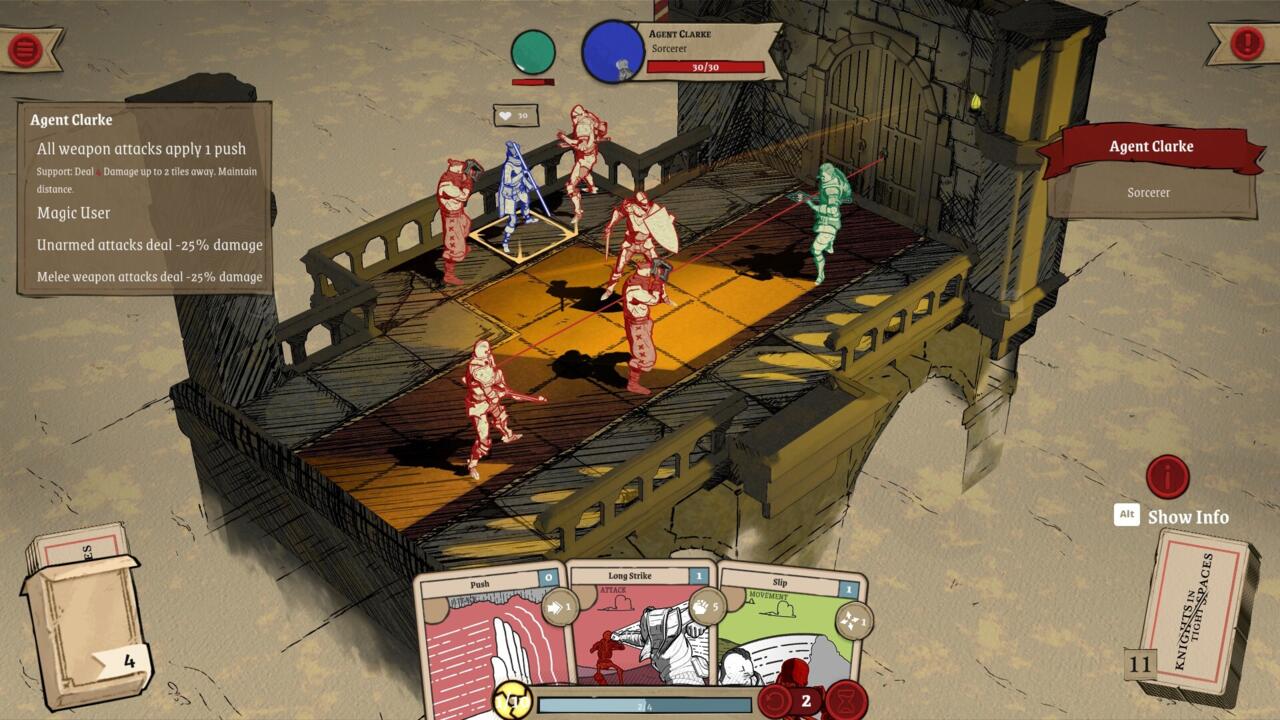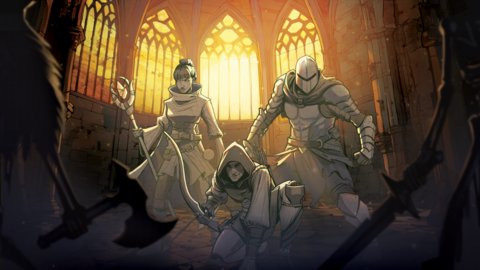Knights in Tight Spaces feels like more Fights in Tight Spaces. The sequel builds on the first game’s formula by adding more to it but it largely plays the same. You’re still drawing cards from your deck each turn, forcing you to think on the fly when it comes to what moves and special abilities you have to strategically take down the numerous enemies all huddled around you in a tight, grid-based arena. But the sequel builds on the rewarding flow of the first game by doubling down on the creative control of your deck, letting you further personalize the strategy you want to bring into combat.
The biggest two adjustments in Knights in Tight Spaces are (as the name implies) shifting from the modern-day super spy visuals to something more fantastically medieval and implementing a party system. So instead of working your way through a mission as a solo spy, you’re now a whole party of knights, archers, spellcasters, and other adventurers. You can play up to three characters at a time, with each having access to different cards and abilities. You’re still only using one deck but now you have to build it from a pool of multiple characters, creating new opportunities to take down tough foes with combos.

For example, you could maneuver your tankiest character to shield your spellcaster from harm while they toss a fireball at the group of enemies in the corner, and while your last character switches places with one of the brutes trying to corner them so that an enemy archer accidentally shoots said brute instead. Each turn of combat is a series of considerations as you try to cause and effect your way to the best turn possible while also attempting to worsen the enemies’ turns based on what you can see they’re about to do.
